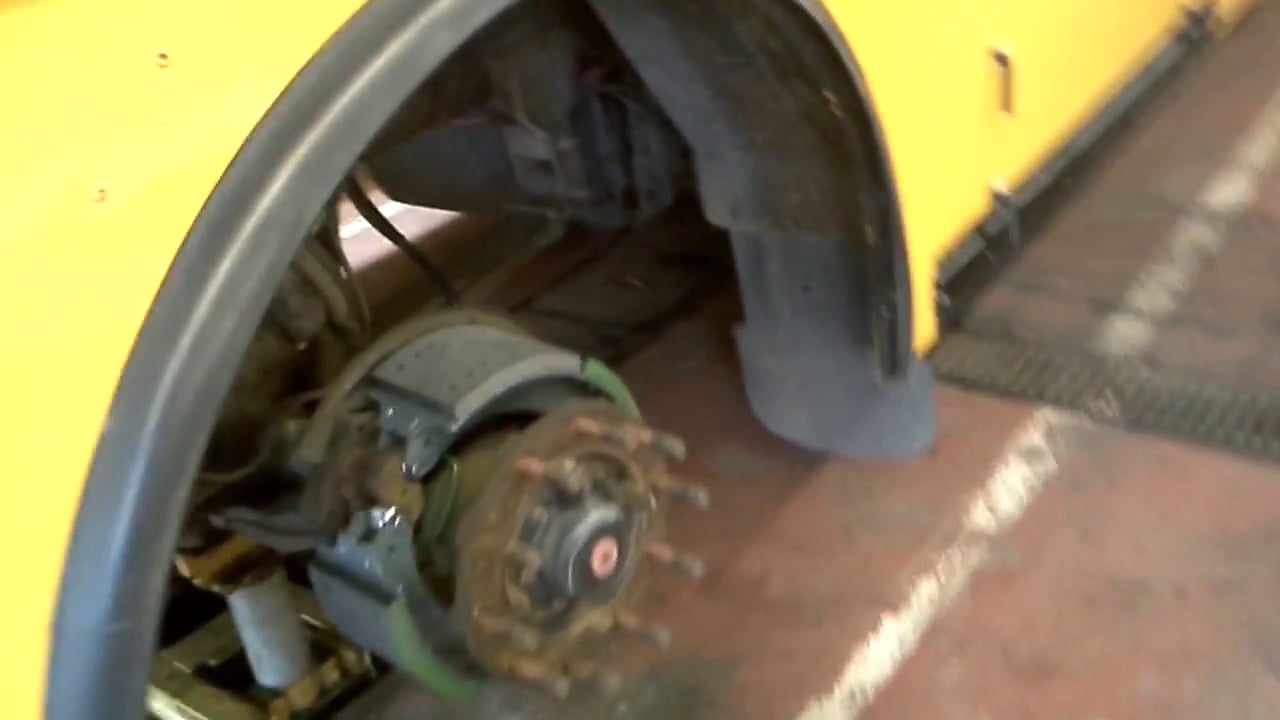Brake Jobs are a common repair in our fleet and the video shows a steering axle brake job being done on an HDX Thomas pusher bus. They usually last several years since there is a lighter load on the front axle compared to the drive axle which supports the engine and transmission. These shoes are seven inches wide with plenty of braking area on the drum. The drum has a limit of 120 thousands of an inch over standard.
The one problem with machining the drum is the lost material and usually we end up with only 40 thousands of an inch left on the drum wear. We do not want to push our brakes too far with the wear limits. The commercial vehicle inspection manual allows 8 mm of linings before replacement is required. The PM plan dictates that we change brake shoes well before that measurement is reached. When the linings reach just under 3/8 of an inch the brakes are replaced.
A very accurate method to measuring shoe and drum wear is cam rotation which is required during a motor vehicle inspection. Cam rotation is the amount of travel of the cam shaft from the base of the brake roller and S Cam. In other words it’s the brakes backed off completely where the rotation is started at zero degrees. The maximum rotation allowed is 120 degrees but 100 is where we draw the line.
Cam Rotation Meter
Cam rotation was introduced to save removing wheels to check brakes during a motor vehicle inspection. The rotation meter is splined and slides on to the camshaft so it rotates with it during brake applications. A visual inspection has to be performed during an MVI to check for separated or cracked linings. This is common when the shoes have been running for a while absorbing both heat and cold for a long time.
This method for checking brake wear is tried and true and I’m sure most of the mechanics doing inspections appreciate not having to remove backing plates and wheels. Brakes are one of the most important parts of any vehicle in my opinion and regular inspections is a fool proof way to keep on top of them.
Engine Code Problems
In the video I also mentioned an engine code that is fairly common with our Mercedes engines. It’s typically an emission problem which involves removing soot from sensors or replacing them if required. The DPF can’t collect the front end soot and ash that sticks to the charge air piping, EGR, air intake throttle and all the various sensors so we have to read the code and follow the troubleshooting steps as required. Thanks for reading and please feel free to leave a comment below.







